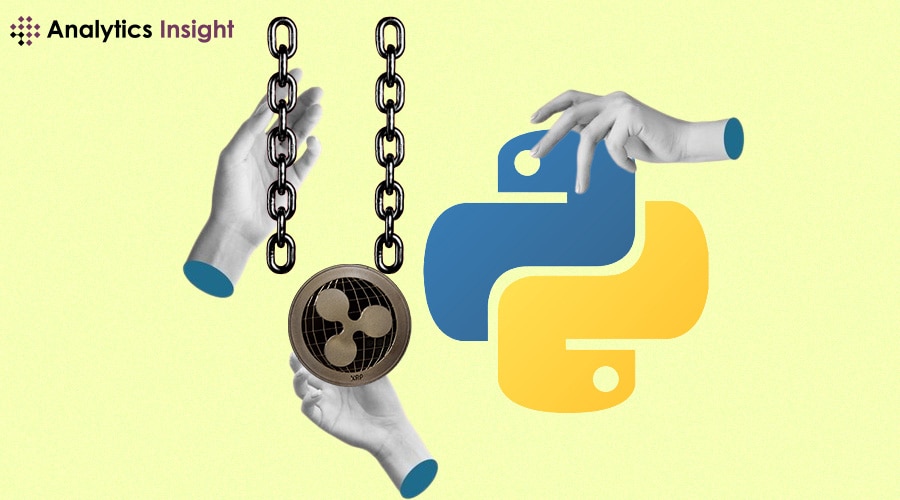.post-author {
position: relative;
padding-bottom: 0px;
height: 28px;
}
.author-image {
position: absolute;
bottom: 0;
left: -60px;
width: 100%;
border-radius: 0%;
cursor: pointer;
}
@media only screen and (max-width: 600px) {
.img {
position: absolute;
left: 20%;
width: 250px;
height: 200px;
}
.author-image {
left: 0px;
width: 100%;
}
.code-block .container {
padding: 0px;
}
.post-author {
margin-bottom: 0;
}
}

How to Build Your Blockchain and Cryptocurrency Using Python
In the dynamic realm of technology, blockchain and cryptocurrency stand as revolutionary concepts, reshaping industries, and challenging traditional systems. For aspiring developers and coding enthusiasts, creating a blockchain and cryptocurrency in Python can be both an exhilarating and educational endeavor. This comprehensive guide aims to walk you through the essential steps, empowering you to build your blockchain and cryptocurrency, gain a profound understanding of decentralized technologies, and unlock new possibilities in the world of coding.
Understanding the Basics
1. Foundations of Blockchain:
To embark on the journey of building your blockchain, it’s crucial to grasp the fundamental principles of this transformative technology. A blockchain serves as a decentralized ledger, documenting transactions across a computer network. Each block in the chain contains a unique hash, a timestamp, and the hash of the previous block, creating an immutable record of transactions.
2. Cryptocurrency Essentials:
Cryptocurrency, a form of digital or virtual currency, depends on cryptographic methods to ensure security. Before delving into coding, it’s essential to understand how transactions work, addresses are generated, and consensus mechanisms operate. Key cryptocurrencies like Bitcoin, Ethereum, and Binance Coin serve as valuable references for learning these core concepts.
Building Your Blockchain
3. Setting Up Your Development Environment:
The first practical step involves setting up your Python development environment. Ensure that you have Python installed, and consider utilizing a virtual environment for managing dependencies. Version control using Git can help you track your project’s progress, facilitating collaboration and future updates.
4. Creating the Blockchain Class:
Begin the coding journey by defining a Block class and a Blockchain class in Python. The Block class will store essential data, including a timestamp, an index, and the hash of the previous block. The Blockchain class will manage the chain, incorporating functions for adding blocks and validating the chain.
5. Implementing Proof of Work:
Proof of Work (PoW) serves as a critical consensus mechanism ensuring the security and immutability of your blockchain. Integrate PoW into your Python code by implementing a mining function. Miners must solve a cryptographic puzzle to add a new block to the chain. Fine-tune the difficulty of the puzzle to control the rate of block creation.
Developing Your Cryptocurrency
6. Creating the Cryptocurrency Class:
Extend your Python project to include a Transaction class and a Cryptocurrency class. Transactions should include sender and recipient information along with the amount. The Cryptocurrency class will manage the creation of transactions, mining rewards, and the overall state of the network.
7. Implementing Wallets:
Incorporate wallet functionality into your Python project by creating a Wallet class. This class should generate key pairs, sign transactions, and check balances. Understanding how wallets function is crucial for managing user accounts within your cryptocurrency system.
8. Decentralizing Your Network:
To make your cryptocurrency truly decentralized, implement a peer-to-peer network. Nodes on the network will communicate and share information about transactions and blocks. Utilize Python libraries like a socket to establish connections between nodes, fostering a distributed and secure network.
9. Consensus Mechanism:
Select a consensus mechanism that aligns with your project’s goals. While Proof of Work is a common choice, alternatives such as Proof of Stake (PoS) or Delegated Proof of Stake (DPoS) offer different approaches to achieving agreement on the state of the blockchain across all nodes. Implement your chosen consensus mechanism to solidify the integrity of your cryptocurrency.
Testing and Deployment
10. Testing Your Blockchain and Cryptocurrency:
Thoroughly test your implementation to identify and address any potential issues. Use unit tests to check individual components and integration tests to ensure seamless interactions between different parts of your blockchain and cryptocurrency. Rigorous testing is vital before considering deployment.



